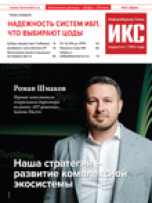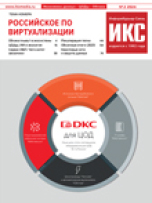| Рубрикатор |  |
 |
| Все новости |  |
World News |  |
 |
European - Mobile Data Market
| 01 марта 2010 |
The market for mobile data in both Eastern and Western Europe is potentially enormous, given the region's population, the rapid development of mobile technologies and the growing number of content providers.
Application stores, initiated by Apple and Nokia and increasingly adopted by pan-European network operators such as Orange, have extended the reach and potential revenue to be derived from gaming, video, music and thousands of additional applications.
The promotion of flat-rate data plans has also become a significant business strategy among MNOs as they endeavour to retain and attract customers, while encouraging customer use of high-end mobile data services. Flat-rate plans have also served to overcome consumer reticence to make use of some services which have hitherto been dismissed as frivolous, expensive and unnecessary. SMS and to a lesser extent MMS services continue to be the dominant data applications, while services such as mobile TV have yet to prove convincing propositions for many consumers.
Significantly, by the beginning of 2010 data accounted for about 26% of overall mobile revenue, compared to 16% in 2006. Yet fierce competition among MNOs, together with regulated data roaming tariffs, has meant that the tremendous growth in mobile data volume has not translated into higher ARPU and revenue. This is likely to continue during the next few years, while MNOs will secure an increasing proportion of revenue from data services.
Operator investments in technology upgrades, specifically in HSPA+ and LTE, will help secure revenue streams in coming years by making high-end services accessible to a wider number of mobile users. In early 2010 Sweden and Norway could claim to have the world's only commercial LTE deployments, and by the end of the year several European markets will be exploiting the potential of super-fast data access. In this respect, MNOs will for the first time be able to compete effectively with fixed-line broadband services. In conjunction with improved network capacity, mobile networks by 2015 will have a more profound part to play in the provision of national broadband services as governments and regulators strive to establish broadband as a universal service. For many rural users mobile broadband will be the only effective platform for Internet access, and thus mobile data use will show continued consumer support and growth.
Markets highlights:
Finland
SMS is used by 90% of mobile subscribers, while about 35% use MMS. The high price of other mobile services, including mobile Internet, email, video calls, and mobile TV, has hampered their uptake thus far but recent operator focus on bundled packages which include generous mobile data caps has led to a turnaround: the volume of data transferred over mobile networks quadrupled in 2007 and doubled again in both 2008 and 2009. On average each of the 2.5 million mobile broadband subscribers transfers about 1.5GB of data per month, compared to about 8GB for fixed-line subscribers. This gap is set to close rapidly during the next two years.
Germany
The volume of mobile data traffic has grown sharply in line with the fast-growing base of 3G subscribers, which is expected to reach some 27 million by the end of 2010. Key factors of this growth have been the expanded network coverage (reaching 90% of the population by early 2010), and the steadily improving speeds available. In addition, the reduced rates for mobile data services and the introduction of transparent tariff models for data use have played an important part in encouraging data use among subscribers. Competition among MNOs to provide affordable flat-rate tariffs has brought the price per MB down to €0.10 by early 2010, compared to €0.40 in 2007.
Sweden
Mobile data use is set to grow rapidly in 2010 and 2011 in response to MNO investments in upgraded networks using HSPA and LTE technologies. Although much of this infrastructure upgrade was undertaken before consumer need was identified, the commercial launch of LTE has been strengthened by the adoption of business models which encourage consumers to make use of services available. These incorporate popular services such as flat-rate music downloads and low-price mobile broadband offers. As a result, the number of subscribers using mobile data services reached 6.5 million by early 2010, representing some 60% of all mobile subscribers. By the end of 2010 the average mobile data user will download about 2.5GB per month, and mobile data revenue may generate some SEK 3.2 billion for the year.
Источник: companiesandmarkets.com
Читайте также:
Опубликован перечень поручений по итогам заседания Совета по стратегическому развитию и нацпроектам
Решения N3COM прошли тестирование на сети LTE ОАО «РЖД»
МТС начинает отключать старые сети 3G
билайн завершил масштабную модернизацию сети в Московской области
В Узбекистане развернут первую в Центральной Азии сеть 5G Standalone

















Оставить свой комментарий:
Комментарии по материалу
Данный материал еще не комментировался.